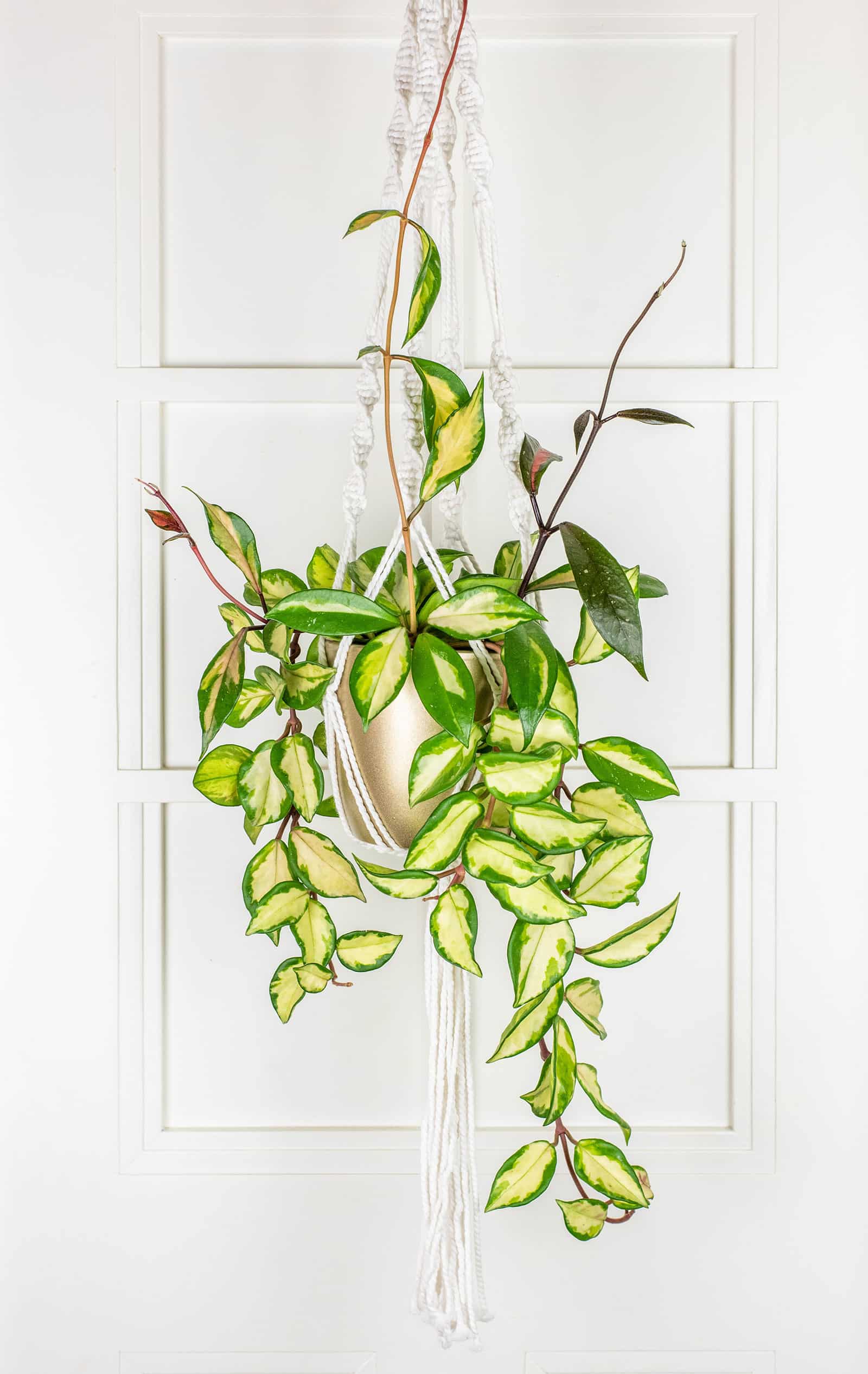Are you curious about Hoyas or hoping to expand your Hoya collection?
I don’t blame you—these lush green beauties are one of the most forgiving houseplants around, making them perfect for beginners and plant lovers who don’t want to fuss over their plants too much.
There are more than 500 accepted Hoya species out there, and many more Hoya varieties within each species (some official and some not), leading to much confusion in the Hoya world about the actual names of the cultivars and whether or not they’re actually the same plants.
Read more: What Are Cultivars, Varieties, Hybrids and More: Layman’s Guide to Plant Taxonomy
I’ve listed a few Hoya varieties in my other guide on Hoya plant care (which you should bookmark after reading this so you know how to care for yours), but to help you wade through this complicated genus, I’m breaking down 13 of the most common Hoyas you’ll find and how to better identify them.
But first, what are Hoyas?
Let’s get acquainted with Hoyas. “Hoya” refers to a large genus of tropical and subtropical plants that are native to Asia and also found in Australia and Fiji.
Hoyas are semi-succulent vining plants, so their natural inclination is to climb up—or drape down. In the wild, they are both epiphytes (growing on trees in a non-parasitic manner) and lithophytes (growing on rocks).
They’re known for their thick, juicy leaves, where they store moisture so they can survive “in the air” with little soil, much like Schlumbergera x buckleyi, Tillandsias, Rhipsalis, and other epiphytes/lithophytes.
Hoya flowers grow in a ball-shaped cluster called an inflorescence (similar to hydrangea flowers) and when they bloom, they often smell like chocolate cake! To be fair, I haven’t smelled every single hoya flower, but the dozen or so that I’ve come across all have varying degrees of that sweet chocolate scent.
Did you know? If it seems like Hoya flowers also bear a canny resemblance to milkweed flowers, you’d be right. The two plants belong to the Apocynaceae (dogbane) family, and more specifically, the subfamily known as asclepiads (or milkweeds).
Are Hoyas easy for beginners to care for?
That’s a resounding yes! If you’re a self-declared “black thumb,” Hoyas will make you feel like a rockstar. These beginner-friendly plants are quite forgiving when it comes to water and sun because of their epiphytic nature. (Though that’s not to say they can be somewhat neglected like true succulents—they still prefer moisture.)
Hoyas are very easy to find, and you’ll often see them in big box stores as well as specialty nurseries. They’re sometimes labeled as “wax plants” or “wax vines,” and I’ve even seen them labeled as simply “Hoya” or “assorted Hoya” which drives me kind of crazy because there are so many varieties that are completely different from each other!
Below, I’ve compiled 13 types of Hoyas you’re likely to find (and which I think are great options for beginners to start with).
13 beginner-friendly Hoyas to collect
1. Hoya carnosa ‘Compacta’
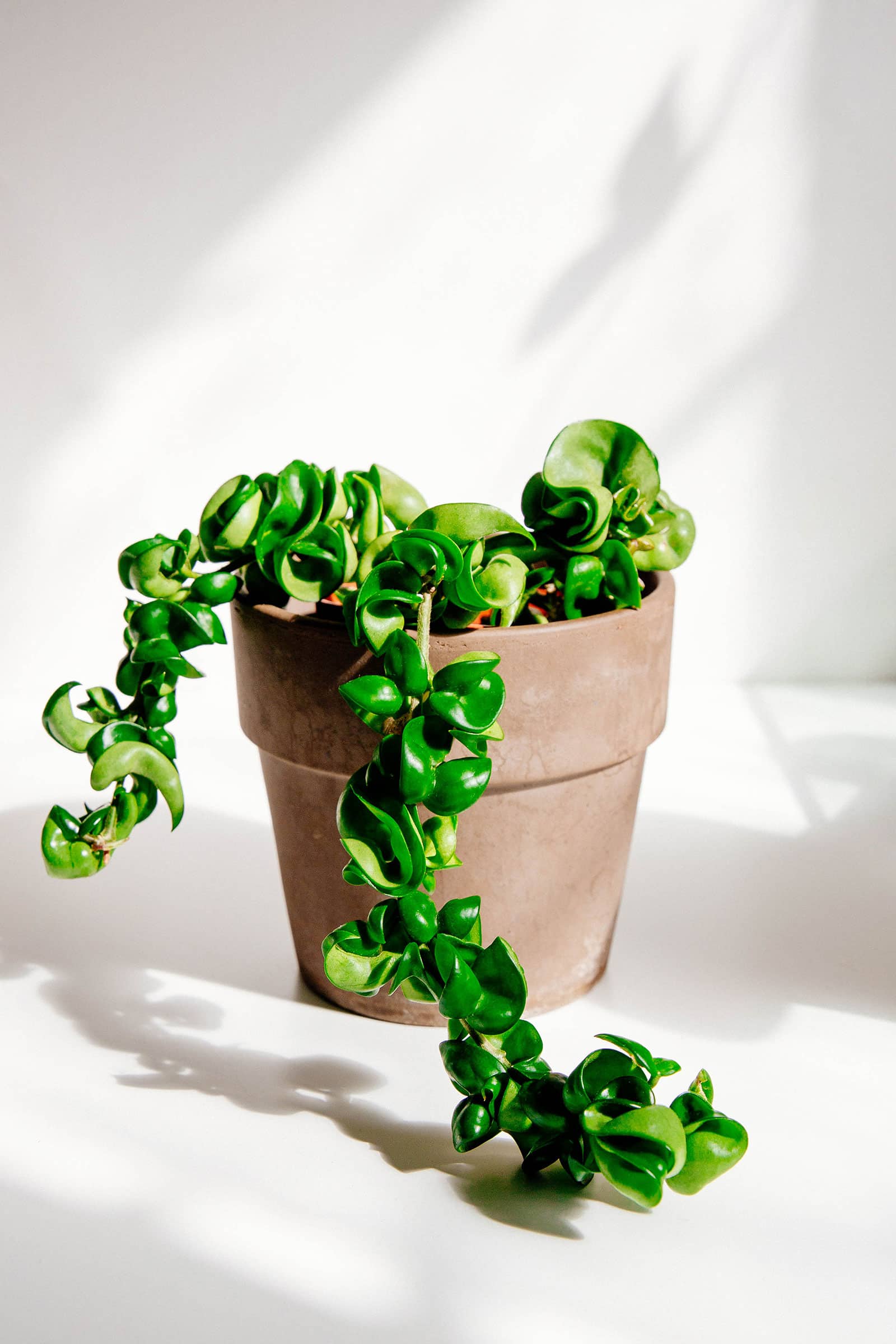
The most common (and striking!) cultivar of Hoya carnosa, also known as the Hindu rope plant or simply, rope plant. It’s characterized by its curly and twisted leaves that hang down like ropes and look quite different from the species’ normal foliage.
This variety was first introduced by Ed Hummel and family, among the most renowned Hoya hybridizers ever. It has been indicated that Hummel produced it by exposing normal H. carnosa to cobalt radiation!
‘Compacta’ is sometimes sold as Hoya carnosa ‘Krinkle Kurl’. From what I’ve read, this may be the result of an attempt by Barnell L. Cobia of Winter Garden California, whose name you’ll see pop up a lot in this section, to re-market an existing plant.
There’s also a variegated version of ‘Compacta’ available, called ‘Mauna Loa’. That one was patented in 1971 by Cobia. The leaves are green on the outside, with cream and sometimes pinkish coloration on the inside.
Hoya carnosa ‘Compacta’ is occasionally listed as a separate species, Hoya compacta. This is not the case: it’s definitely an H. carnosa cultivar.
Did you know? A Danish study indicated that in professionals working with Hoya carnosa ‘Compacta’, the plant had caused asthma and rhinoconjunctivitis… better known as allergies! It may be worth casting a suspicious eye on your wax plant if you start sniffling whenever it blooms.
2. Hoya carnosa ‘Tricolor’ or Hoya carnosa ‘Krimson Queen’
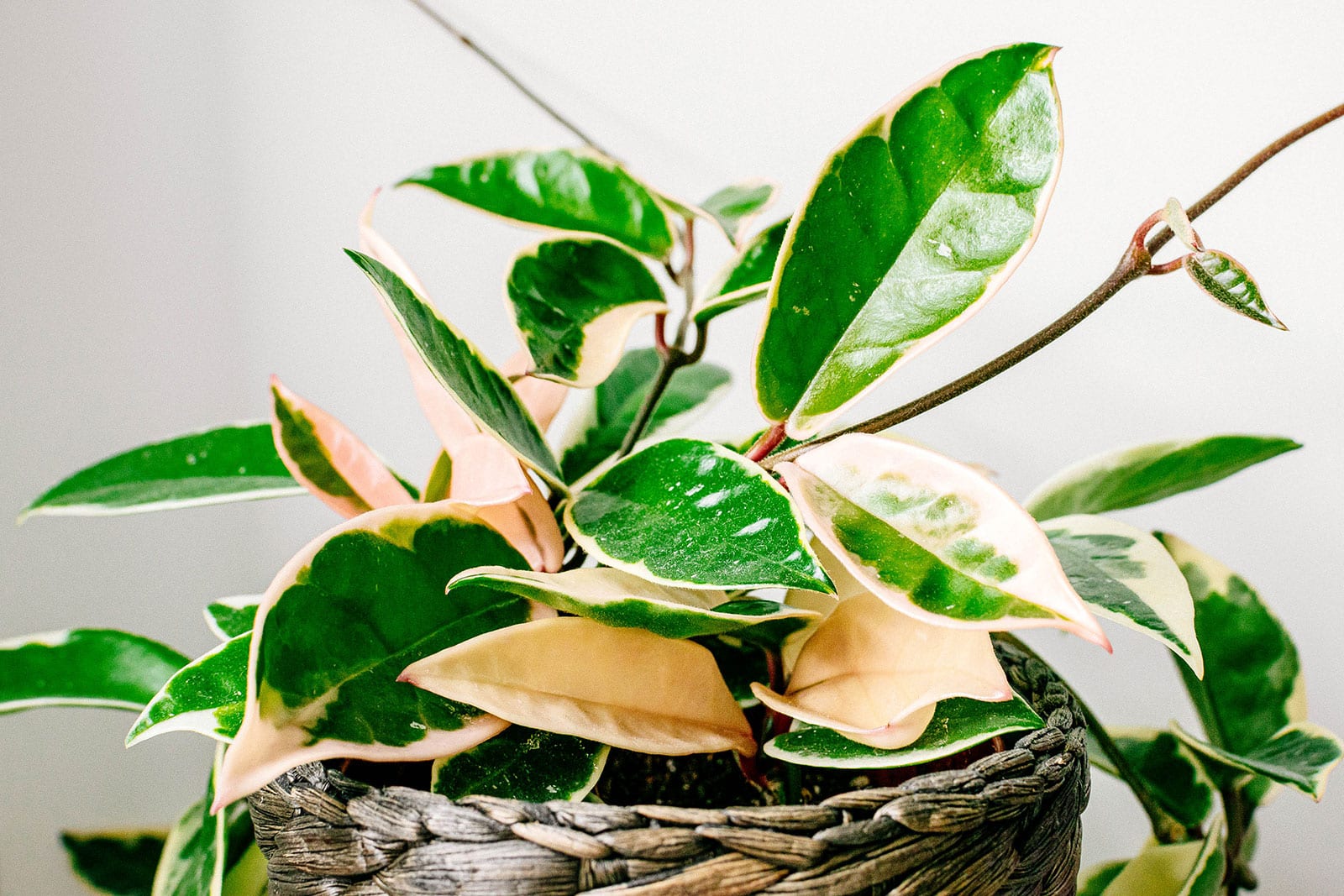
Often mentioned separately, they’re actually the same cultivar. This one’s beloved for the variegation on the outside of the leaves, which emerge pinkish and then fade to cream as they mature. Another big favorite and a real beauty!
The variety was first patented in the 1950s, again by B. Cobia, with the patent expiring in the ’70s. The official patented name was ‘Tricolor’, but it was more often sold as ‘Krimson Queen’. This still often leads to confusion, even at nurseries where they’re sold.
3. Hoya carnosa ‘Rubra’ or Hoya carnosa ‘Krimson Princess’
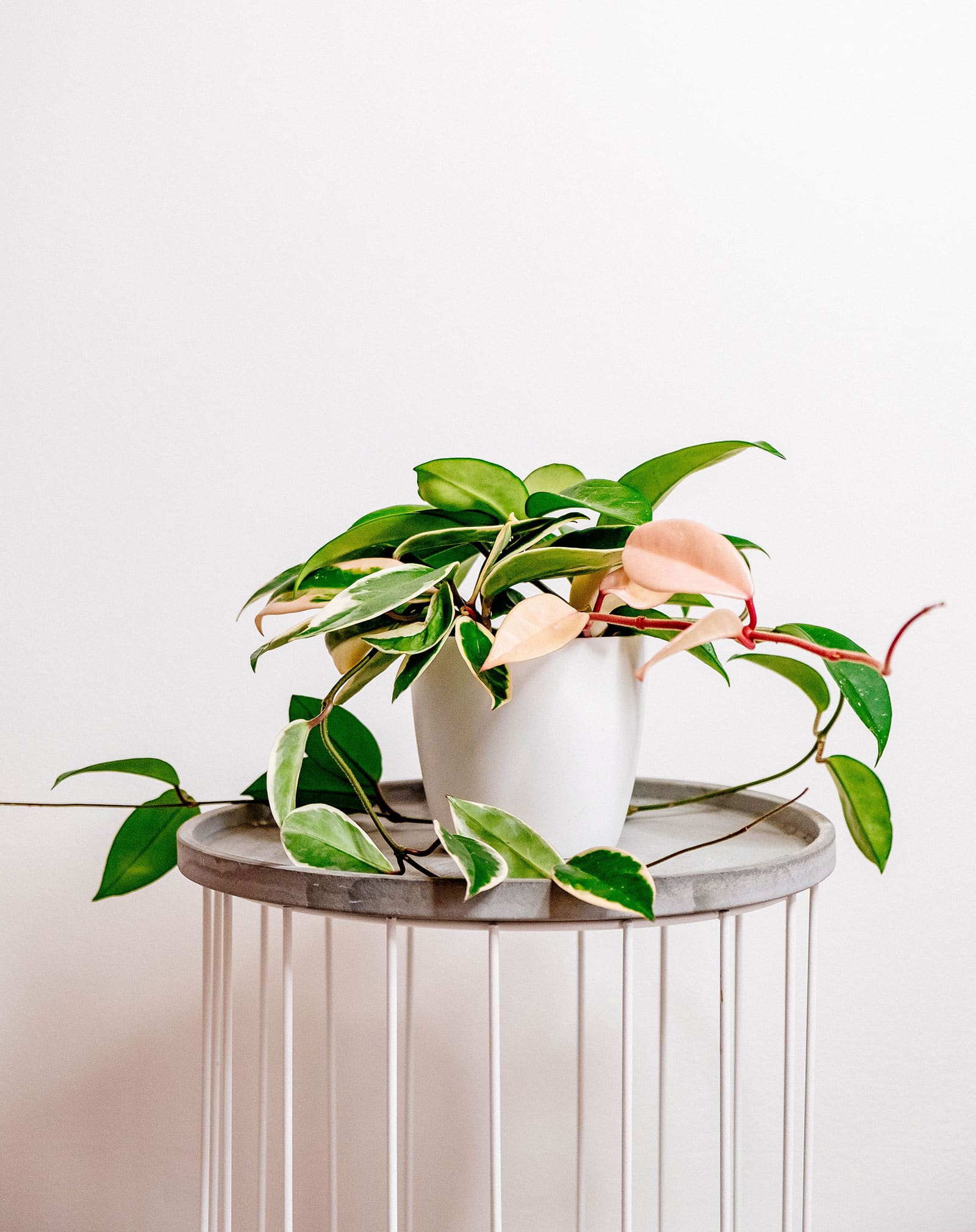
Mr. Cobia strikes again! In 1973, he patented a plant he called Hoya carnosa ‘Rubra’. It’s very similar to the aforementioned ‘Tricolor’/’Krimson Queen’. Not surprising, because that was actually the parent plant for this one!
The difference is that the variegation on ‘Rubra’ is reversed: the leaves are green on the outside, but colored on the inside. ‘Rubra’ is often sold as Hoya carnosa ‘Krimson Princess’, leaving houseplant lovers befuddled. Rest assured that they are the same plant!
4. Hoya carnosa ‘Exotica’
No, you’re not seeing double! From the nursery of Ed Hummel (Hummel’s Exotic Gardens) came Hoya carnosa ‘Exotica’, which is very similar in looks to the aforementioned ‘Rubra’/’Krimson Princess’.
Both cultivars feature similar reverse variegation. However, they’re not the same plants, as mentioned in the patent for ‘Rubra’. Typical wax plant confusion strikes again!
5. Hoya carnosa ‘Argentea Picta’
In 1971, Barnell Cobia filed a patent for a new Hoya carnosa variety he called ‘Argentea Picta’. Apparently, it was derived from an unusual cutting taken from another H. carnosa cultivar called ‘Verna Jeanette’.
This one’s quite the looker. The leaves are relatively rounded and silvery green in color, with cream edges. Nowadays there’s also Hoya carnosa ‘Argentea Princess’, which sports reverse variegation: the cream coloration is on the inside of the leaves.
6. Hoya carnosa ‘Krinkle 8’
Although I can’t find the patent for Hoya carnosa ‘Krinkle 8’, I’m pretty sure this is also a B. Cobia production. This Hoya is characterized by its dimpled foliage.
In fact, the ‘8’ is a reference to the number of dimples on each leaf! This apparently helps to tell it apart from Hoya carnosa ‘Chelsea’, which has only six dimples.
There’s also a Hoya carnosa ‘Krinkle 8 Variegata’, which features cream coloration on the leaf rims. That one was, unsurprisingly, also produced and patented by Cobia (though this time with a co-inventor) in 1978.
7. Hoya carnosa ‘Freckles’ or Hoya carnosa ‘Freckles Splash’
Produced by Susan Swartzfager of KOKO Ranch Hoya in Florida by crossing Hoya fungii with H. carnosa, Hoya carnosa ‘Freckles’ is characterized by the fine silver splashes on its dark green foliage.
As seems to be a bit of a trend with Hoyas, things with this one are a bit jumbled, as it’s sometimes sold as Hoya carnosa ‘Freckles Splash’. It appears to be practice for sellers to add the term ‘Splash’ to ‘Freckles’ and other Hoya carnosa specimens with more extensive speckling.
Did you know? The ‘splashes’ that appear on many thick-leaved Hoya species are caused by tiny air pockets. They can be coaxed out of the plant by giving it plenty of indirect light. This is why some Hoya lovers say to just skip any splashy cultivars entirely, stating it’s little more than a gimmick.
8. Hoya pubicalyx

Hoya pubicalyx sports thick, waxy, elongated leaves with pointed tips, and most of the ones I’ve seen are the “splash” variety with white and pinkish specks throughout. It looks quite similar to some of the Hoya carnosa cultivars mentioned above, but is in fact its own species.
While Hoyas all have different growth rates, Hoya pubicalyx, in particular, is one of the faster-growing Hoyas and cascades beautifully if grown in a hanging pot.
9. Hoya australis
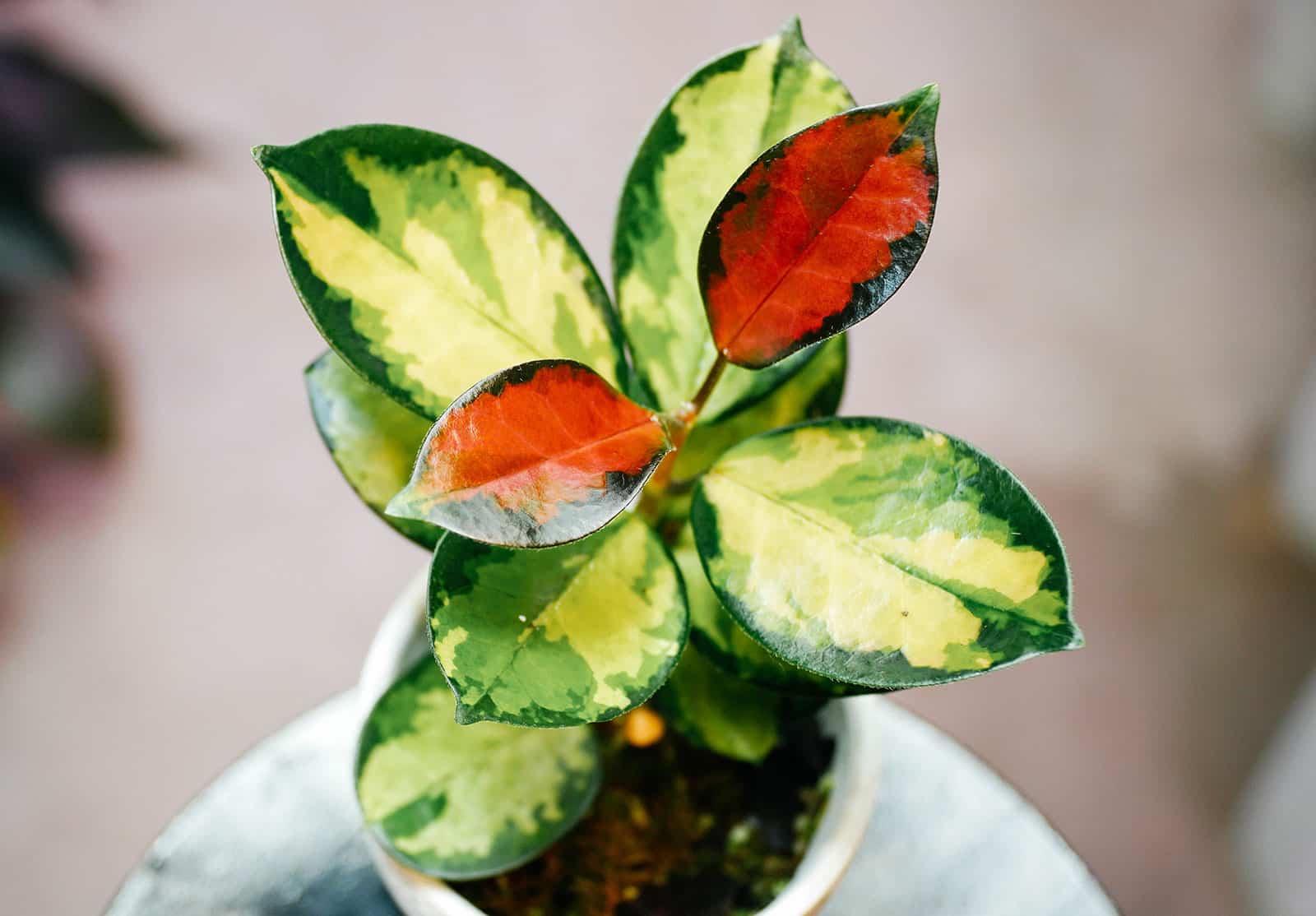
Hoya australis has glossy, slightly wider oval leaves with vines that have a tendency to climb up, rather than hang down. New leaves emerge with a reddish hue, then turn green as they mature.
The slender stems intertwine as they grow, and are really stunning if given a trellis or totem to climb. With incredible lengths reaching 13 to 33 feet, this is one plant that can be trained along a shelf or window ledge, or draped above an archway for a cozy jungle vibe.
10. Hoya curtisii
Hoya curtisii reminds me of another epiphytic plant, Peperomia prostrata, with its trailing vines of tiny leaves. Looking like fat teardrops, the leaves have silvery variegation that makes them very easy to differentiate from other types of wax plants.
While not as readily available in garden centers as other Hoyas, you can source Hoya curtisii online and propagate it quite easily.
11. Hoya linearis
This Hoya is easy to recognize with its distinctive foliage. Unlike other wax plants, Hoya linearis has very narrow, almost cylindrical green leaves spanning an inch long or so, which grow densely on vines. This gives it a dramatic waterfall-like appearance, especially as the plant matures and grows in more fully.
Because of its narrow leaves, the plant is prone to drying out if humidity is too low. Your best bet is to keep Hoya linearis in the bathroom near a window, where it can enjoy all that nice, warm humid air.
12. Hoya kerrii
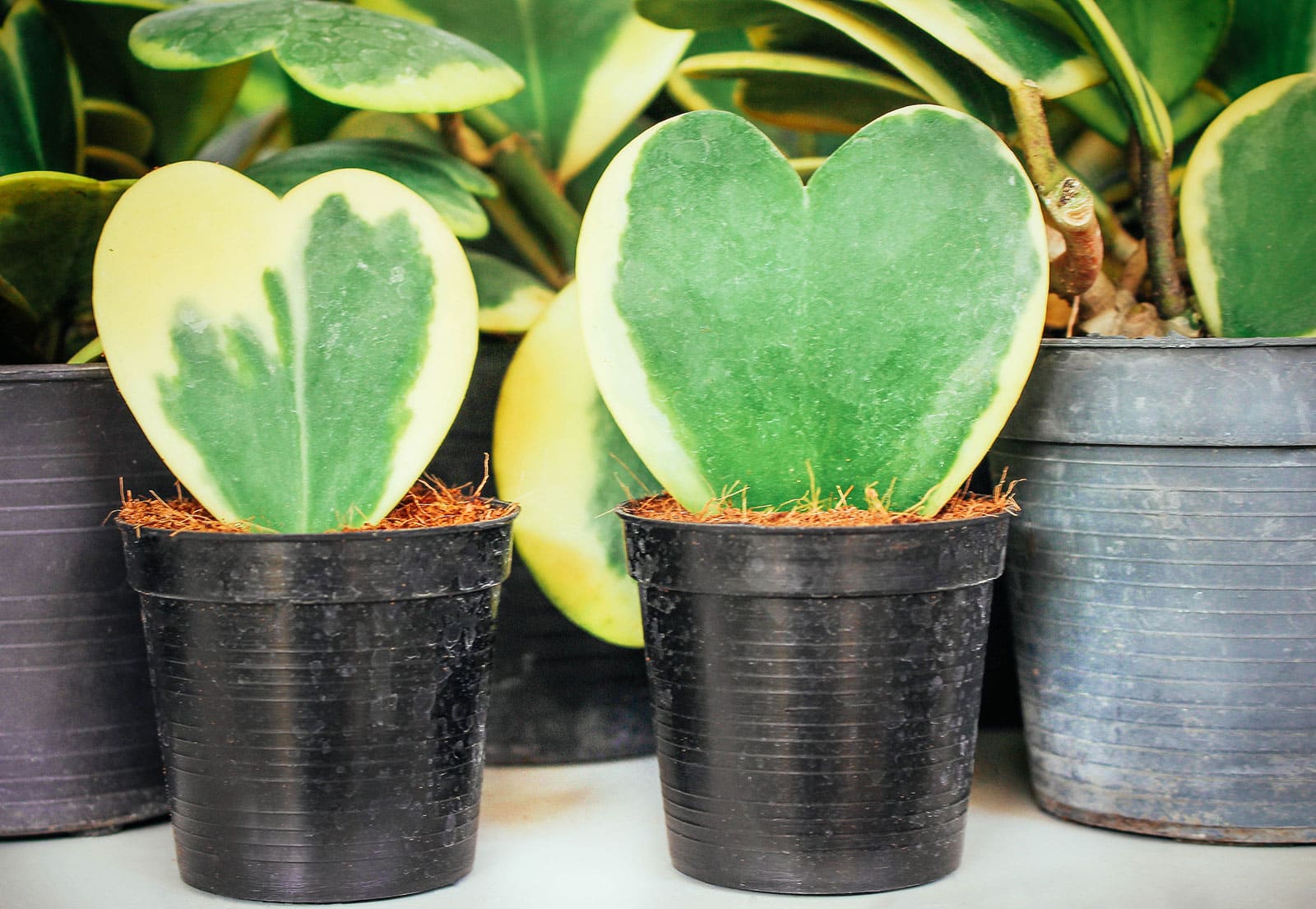
Hoya kerrii, also known as the sweetheart Hoya, is one of my favorite Hoyas for how adorable it is! This houseplant tends to increase in popularity around Valentine’s Day for obvious reasons: the fleshy, two-lobed leaves form a perfect heart shape.
They range in color from emerald green to variegated, with some being green with creamy yellow edges, yellow with green edges, or speckled all over.
The leaves naturally grow on long vining stems, but commercially, Hoya hearts are often found planted as a single “heart” in a pot. Don’t be fooled by this; while you can maintain it for years as a single leaf, a Hoya kerrii rooted this way will never grow into a full-fledged plant with stems.
If you’re interested in learning how to propagate it properly, I have a whole guide here on how to care for Hoya kerrii.
13. Hoya obovata

Hoya obovata looks and grows similarly to Hoya kerrii, except the leaves are rounded. Hoya obovata features large, waxy, deep green leaves, sometimes with splashes of white and pink, and sometimes with yellow variegation in the center.
Be wary of sellers that claim to carry a “splash” cultivar of Hoya obovata, however. The speckling is a natural feature of the plant and happens under certain light conditions.
Don’t fall for the higher prices of a so-called Hoya obovata ‘Splash’ and just get a regular Hoya obovata, which is one and the same. Luckily, this is a “standard” Hoya that you’ll find in many nurseries without a premium price tag.
Compared to other Hoyas, it’s a relatively fast grower that also sets blooms earlier.
View the Web Story on Hoya varieties.


